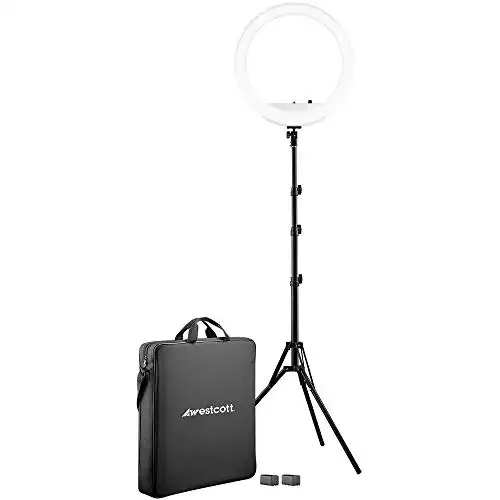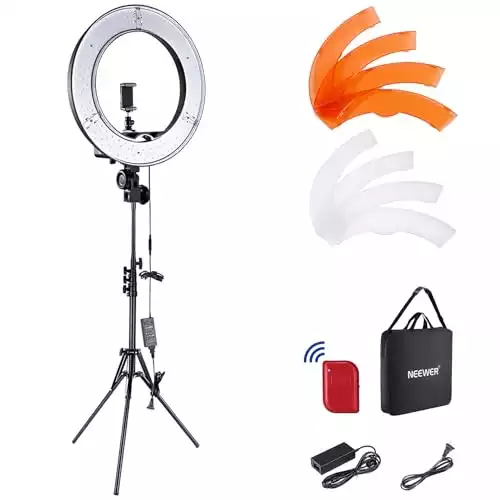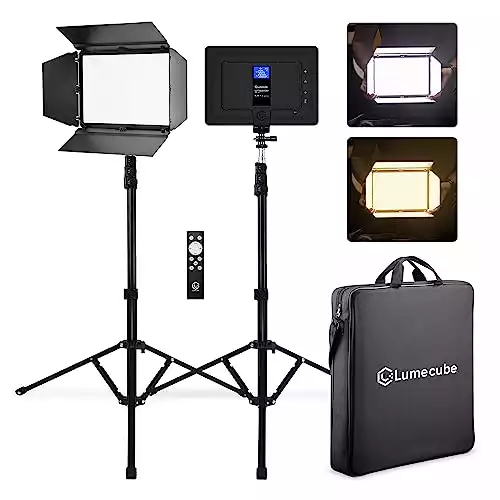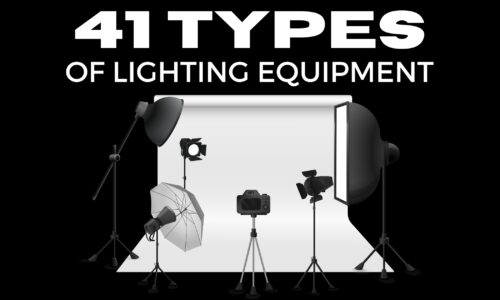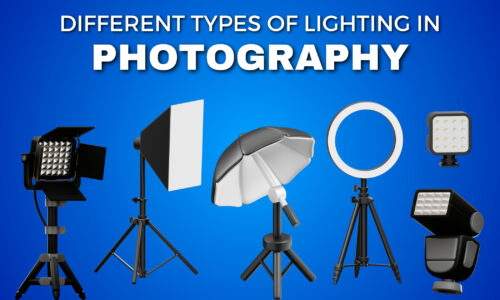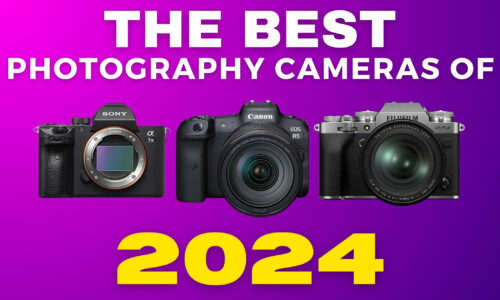Photography Ring Light: 3 Best Choices for Content Creators
When you’re looking to improve your photography game, one tool that you should have is a photography ring light.
These devices help create beautiful, soft lighting, which can enhance your subject’s features and add a natural-looking glow to their skin.
And with so many ring lights on the market, I’m going to help you find the right one for your needs by recommending 3 great choices.
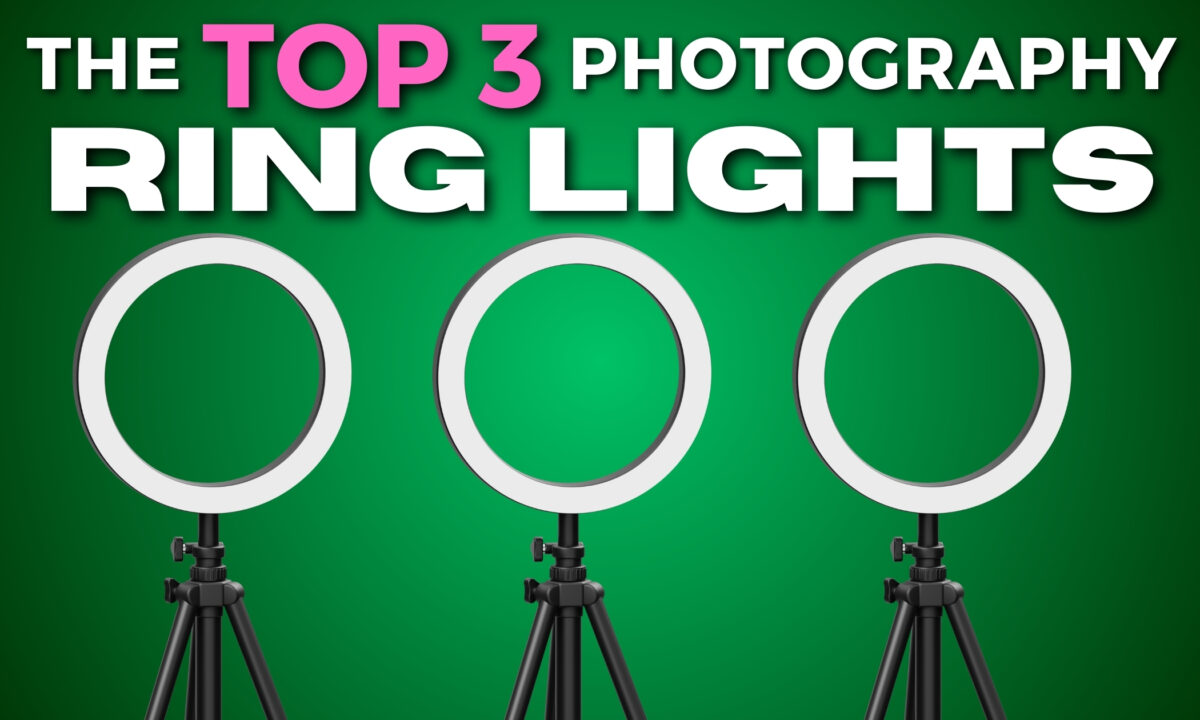
- Westcott 18″ Bi-Color LED Ring Light
- The Neewer 18″ Kit Ring Light
- Lume Cube Cordless LED Ring Light
Because even if you’ve been doing photography for years or you’re starting now, using a ring light can make a nice difference in your portrait photography, vlogging, or video production.
What is a Ring Light?
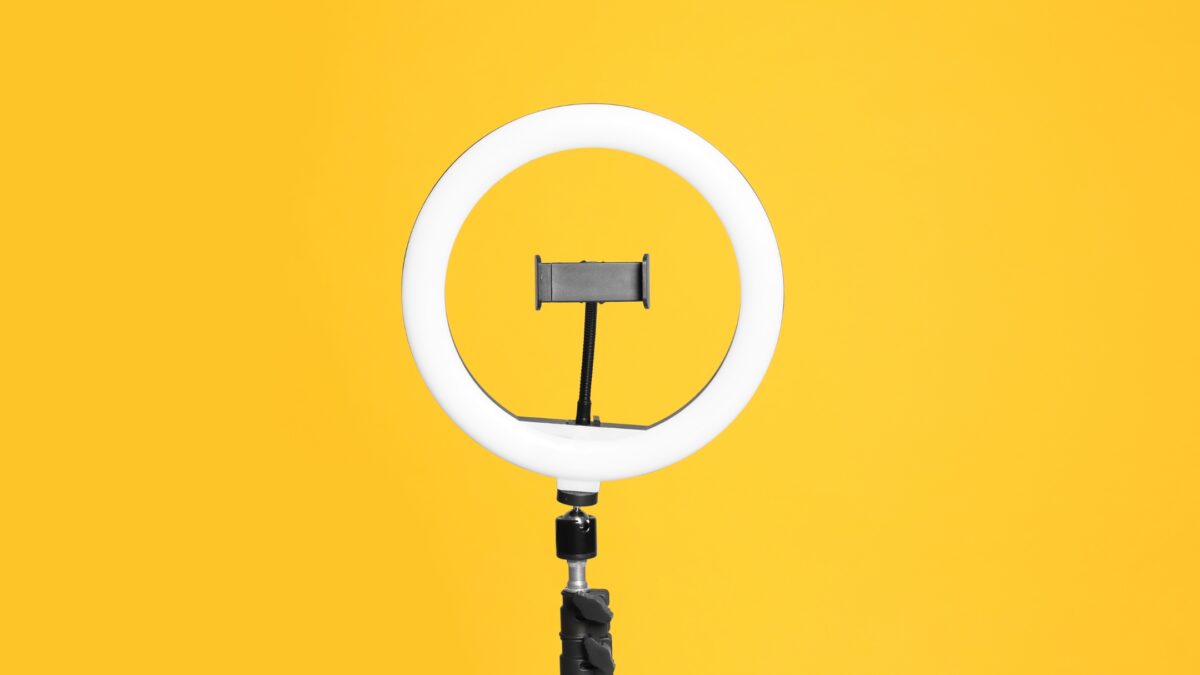
A ring light is a circular light designed to be placed directly in front of your subject or products.
Made from a single circular fluorescent bulb or several interconnected small LED lights that form a circle, ring lights provide uniform light coming directly from your camera’s point of view.
Using a ring light in your photography setup can reduce sharp shadows and soften harsh textures. This gives your photos more clarity and a professional touch.
And besides photography, you can use ring lights for YouTube videos or your social media content. They’re also perfect for adding a soft, even illumination that makes content creators look amazing.
You can find ring lights in different sizes and types. LED ring lights are popular these days for their energy efficiency, versatility, and temperature customization.
Some ring lights also offer both continuous and flash lighting modes, depending on your photography needs.
Why Should I Use a Ring Light for Photography?
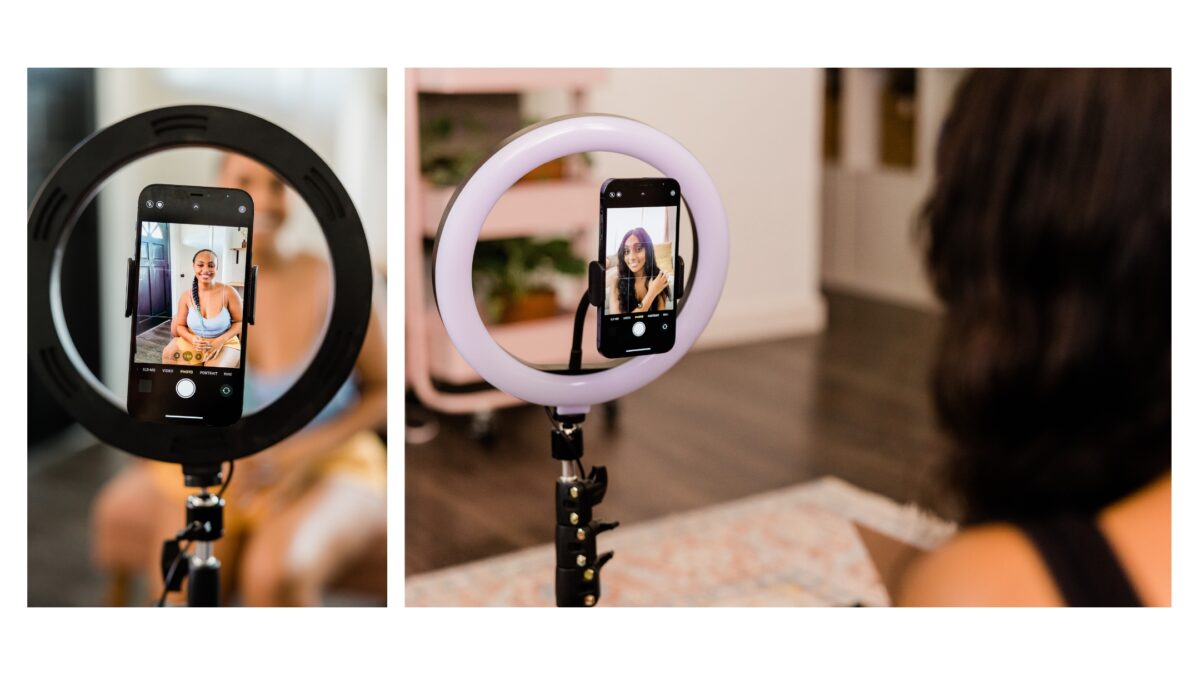
Using a ring light can significantly enhance your photography, especially portrait photography.
Ring lights distribute soft and even illumination. This is helpful when you’re shooting portraits, as it can make your model’s skin look healthier, less wrinkled, and more flattering.
Also, ring lights can create attractive catchlights in your subject’s eyes.
These circular reflections add a touch of sparkle and life to your portraits, making them more engaging and professional-looking. You can also use ring lights for both continuous and flash photography, as well as for shooting YouTube videos.
The uniform light provided by a ring light helps emphasize details in your photos and videos and is great for macro photography or generating unique color effects.
That’s why photographers should add a ring light to their toolkit. They’re multipurpose and allow you to get creative with your photography.
Fluorescent vs. LED Ring Lights
When choosing a ring light for your photography needs, two popular options are fluorescent and LED ring lights. Each has its unique benefits and drawbacks, so understanding the differences will help you make the right choice.
Fluorescent ring lights are known for providing soft, even light, which can be especially useful for portrait photography. They tend to have a color temperature of around 5,000-5,500K, which closely mimics natural daylight.
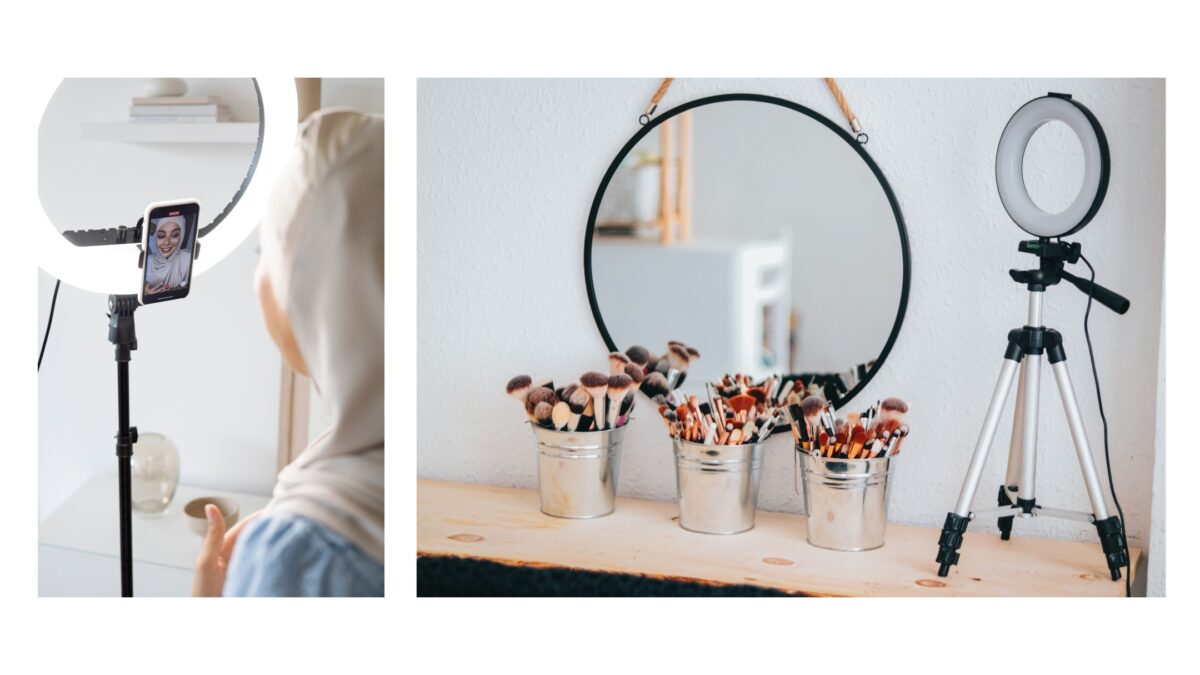
However, fluorescent lights may be bulkier, generate some heat, and they may not last as long as LED ring lights.
On the other hand, LED ring lights are energy-efficient and generate less heat, making them ideal for extended use in photography and videography projects. They usually offer adjustable color temperature, typically ranging from 3,200K to 6,000K, and can provide both cool and warm light.
As a result, LED lights give you more control over your lighting setup and the mood you want to create.
While both fluorescent and LED ring lights have their purposes, consider their differences and how they can affect your photography work. Factors to consider include your subject matter, desired lighting effect, and the environment you’ll be shooting.
Off-Camera vs. On-Camera Ring Lights
There are two main types of ring lights: off-camera and on-camera ring lights.
Understanding the differences between them can help you decide which one is right for your photography.
Off-camera ring lights are more versatile as they can be positioned in various ways around your subject. This allows for greater control over the lighting and creative effects. Off-camera ring lights come in a range of sizes, making them suitable for different types of photography, from portrait to macro photography.
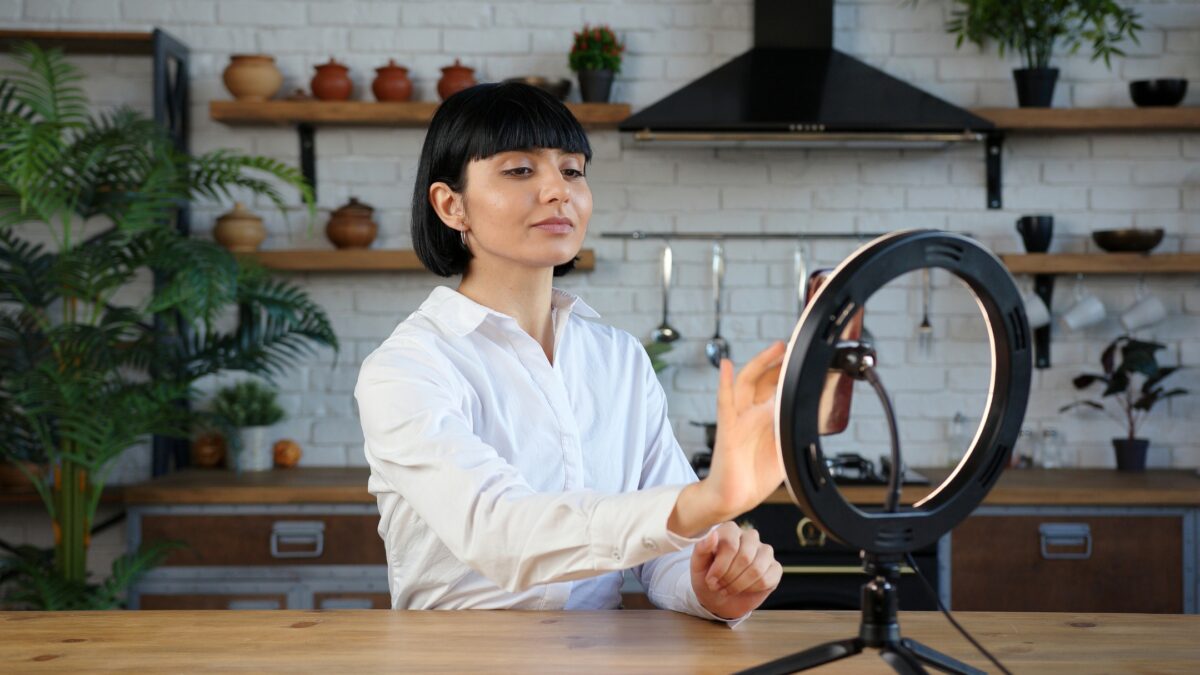
When using an off-camera ring light, you can create a wide band of light to cover larger subjects, making it an excellent option for portrait and videography work.
On-camera ring lights are attached directly to the camera, pointing straight forward. These ring lights are great for providing even, circular illumination that results in flattering catch lights in the subject’s eyes.
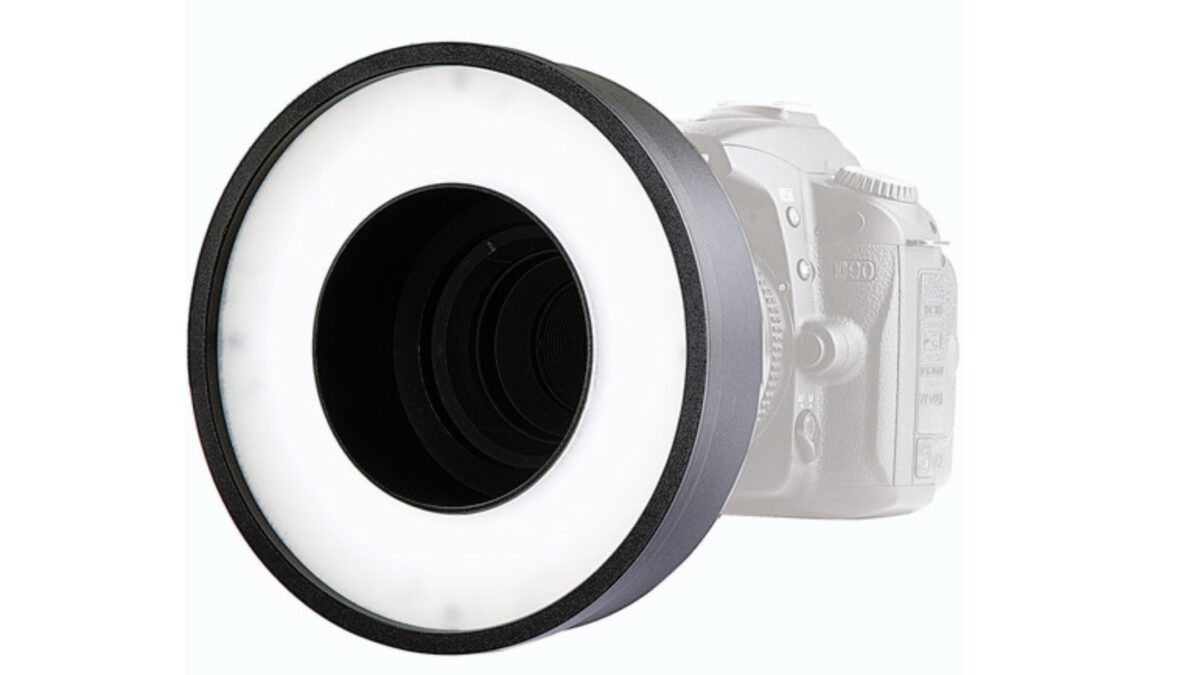
On-camera ring lights are particularly popular in portrait and fashion photography. However, on-camera ring lights may have some limitations in terms of positioning and coverage, as they can only be used in the direction the camera is pointing.
Also, they often provide a smaller, more concentrated area of light compared to off-camera ring lights.
In summary, here are the key differences between off-camera and on-camera ring lights:
- Off-Camera Ring Lights:
- More versatile positioning
- Suitable for various types of photography
- Wider band of light coverage
- On-Camera Ring Lights:
- Directly attached to the camera
- Ideal for portrait and fashion photography
- Limited positioning and coverage
Note: There are attachments and modifiers (shoe mounts) that come with certain ring lights and ones you can purchase separately to turn your off-camera ring light into an on-camera light.
How to Use a Ring Light in Your Photography
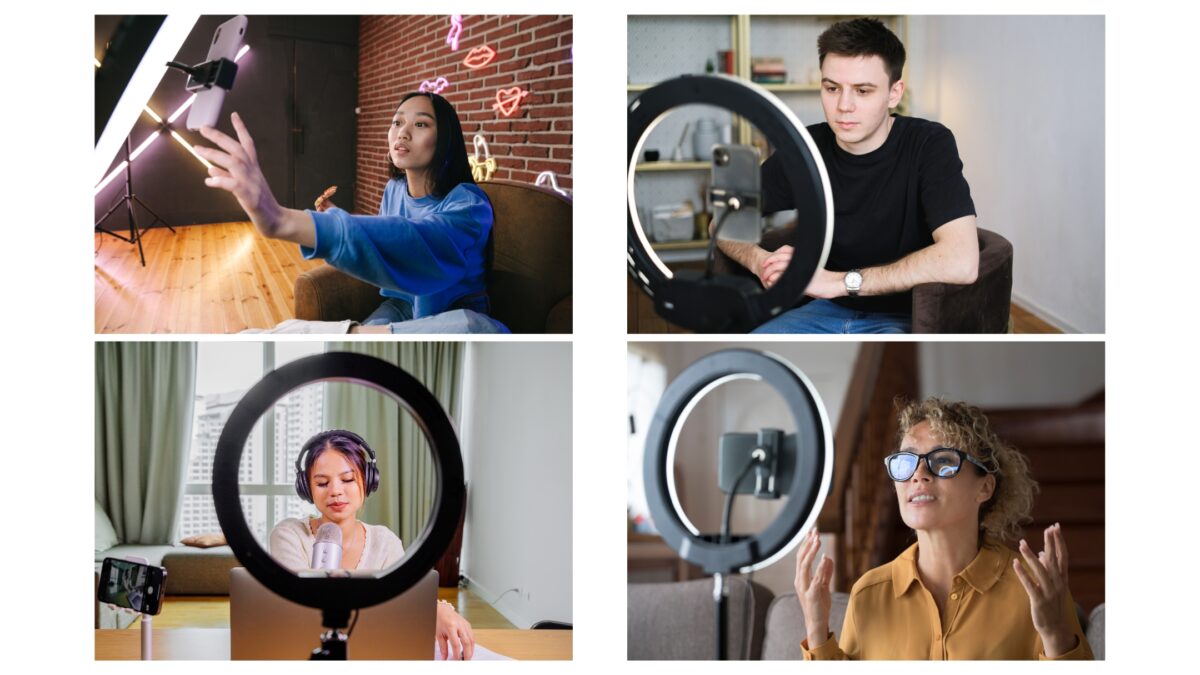
You Can Use It as a Regular Studio Light
Ring lights can be used like any other studio light to create stunning, well-lit images.
Simply position the ring light in front of your subject to evenly illuminate their face and minimize shadows. This is especially helpful in portrait photography, where flattering lighting is key. You then adjust the intensity of the light to suit the desired look and mood of your photo.
Use It for Fill or Ambient Lighting
Another great way to use a ring light is as a fill or ambient light. This helps to reduce shadows and balance the overall lighting in your shot.
Position the ring light slightly off to the side or above your subject so it doesn’t overpower your main light source. The soft, even light provided by a ring light works well in both studio settings and on location shoots, where natural light may not be sufficient.
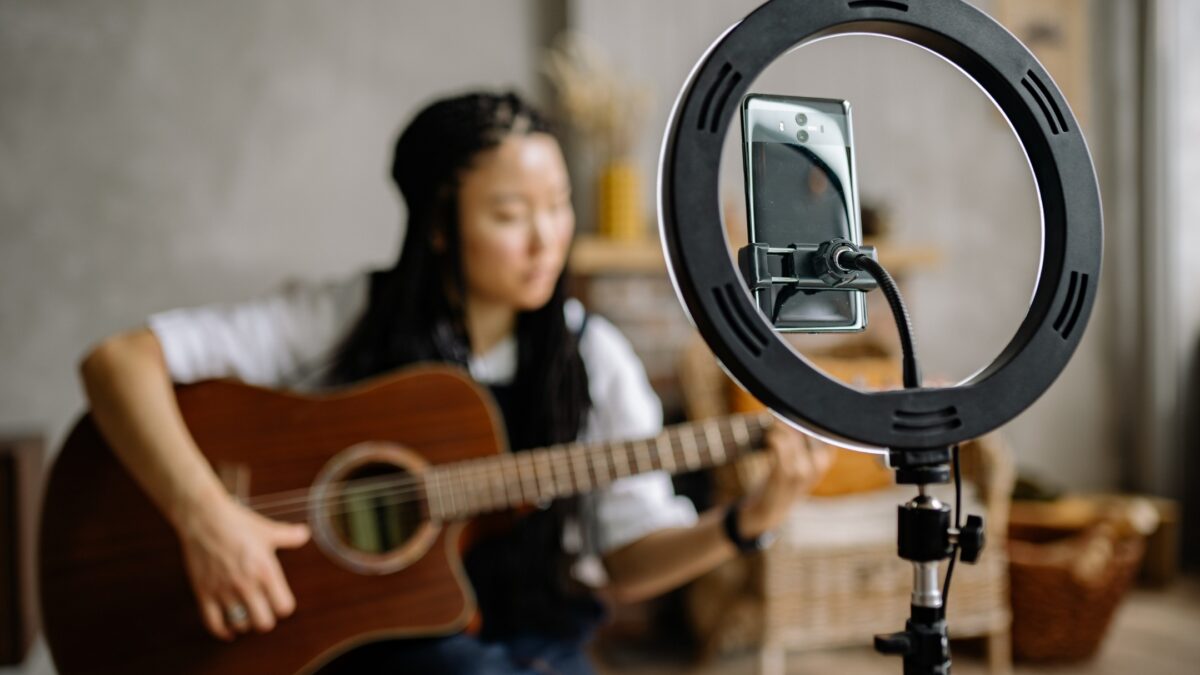
Use It as a Prop in Your Photos
Finally, don’t be afraid to get creative and use your ring light as a prop in your photos.
For example, ask your subject to hold the ring light or place it in the background to add interest and depth to your images. Experiment with the placement and angle of the ring light for unique lighting effects and visuals.
Just keep an eye on the exposure and balance of your shot to confirm you’re still capturing well-lit, professional images.
Tips for Purchasing a Ring Light
Buy One Large Enough to Fit Your Camera, Phone or Tablet
When considering purchasing a ring light, make sure it’s large enough to accommodate your camera, phone, or tablet.
For example, an 18-inch ring light is perfect for portraits within a studio setting, while a smaller ring light might be more suitable for your smartphone device.
Compare Features: Power, Color Temperature, Light Output, Flexibility – Gooseneck, and Accessories
Comparing features will help you choose the perfect ring light for your photography. Some factors to consider are:
- Power: A higher output power will provide brighter lighting. The Neewer Ring Light, for example, offers 55W of output power.
- Color Temperature: Adjustable color temperature (measured in Kelvin) allows you to control the warmth or coolness of the light. Look for a ring light with a range of color temperatures.
- Light Output: The amount of light a ring light emits. Check for options with adjustable brightness levels so you can adapt the lighting.
- Flexibility: A ring light with a gooseneck design provides the most versatility, letting you position the light exactly where you need it.
- Accessories Included: Some ring lights come with add-ons like tripods, mounts, and even remote controls for convenience.
Check The Manufacturer’s Warranty
Finally, it’s always a good idea to check the manufacturer’s warranty when purchasing a ring light. This will give you peace of mind knowing you’re covered in case of any malfunctions or issues with the product.
A reputable brand, like the three mentioned below are known for their quality products. Making them a safe choice.
The 3 Best Photography Ring Lights
1. Westcott 18″ Bi-Color LED
The Westcott 18″ Bi-Color LED ring light offers a versatile solution for your photography needs.
It provides adjustable color temperatures ranging from 3200K to 5600K, giving you the flexibility to create the perfect lighting conditions for your shots. This ring light also features a convenient dimming function, allowing you to precisely control light intensity.
Westcott’s LED technology ensures high-quality lighting without generating excessive heat, making it ideal for extended photography sessions. With its durable build and user-friendly controls, Westcott’s 18″ Bi-Color LED is a great addition to your equipment lineup.
2. Neewer 18″ Kit Ring Light
The Neewer 18″ Kit Ring Light is another fantastic option for photographers seeking a reliable ring light.
Featuring an 18-inch dimmable LED light, this kit comes with everything you need for a successful lighting setup, including a light stand, soft tube, and a smartphone holder. With a color temperature range of 3200K to 5600K, the Neewer ring light gives you the ability to adjust your lighting conditions for your specific requirements.
Also included is a wireless remote that lets you control your ring light from a distance making it even more convenient for use during your photography sessions.
3. Lume Cube Cordless LED Ring Light
For those seeking a portable and compact solution, the Lume Cube Cordless LED Ring Light is the best choice.
This lightweight, battery-powered ring light features an adjustable color temperature range of 3200K to 5600K, like the models mentioned above. The standout feature of the Lume Cube is its cordless design because you can shoot in any location without needing an available power source.
How to Setup and Use a Ring Light in 4 Steps
1. Mount The Ring Light to a Stand
The first step in setting up a ring light is to mount it on a stand. Make sure your stand is sturdy and secure.
Different ring lights may have different mounting options, so ensure your choice is compatible with your camera or device.
2. Position The Ring Light Off to The Side or in Front of You/Your Subject
Now that your ring light is mounted, position it beside you or in front of your subject. Or yourself if you’re taking a self-portrait.
Adjust the distance between the ring light and the subject to control the intensity and softness of the light. Experiment with various distances to find the lighting effect that works best for your specific photographic needs.
3. Set Your Camera’s Exposure Settings
With the ring light in position, it’s time to set your camera’s exposure settings. Since ring lights provide continuous and even lighting, you’ll likely need to reduce the ISO and shutter speed to avoid overexposing your images.
Adjust the aperture size to control the depth of field, which will influence the background and subject’s focus. It may take some trial and error to find the perfect exposure settings, but once you’ve found the right balance, you’ll be ready to go.
4. Take Your Picture and Adjust as Needed
Start taking photos with your ring light setup, and review the images after each shot. Look for even lighting across your subject’s face and a pleasing, natural catchlight in their eyes if the light is directly in front of them.
If you notice any issues, such as harsh shadows or overexposure, make adjustments to the ring light’s distance, direction, or your camera’s settings until you achieve your desired look.
Other Ways You Can Use a Ring Light
For Emphasizing Details
Ring lights are perfect for highlighting small details in your photos, thanks to their even, soft light distribution.
Whether you’re capturing jewelry, flowers, or other intricate subjects, a ring light can help accentuate the finest aspects and minimize shadows, making your subject truly stand out. Give it a try next time you’re focusing on the little things!
Vlogging, Videography, and Conference Calls
Vlogging and videography benefit a lot from ring lights as they provide consistent and flattering lighting on your face.
Positioning the camera lens within the ring light gives you an even distribution of light, capturing you at your best during videos or virtual meetings.
Use ring lights to enhance your overall video quality for conference calls, interviews, and livestreams.
To Create Color Effects
Add a splash of color to your photography with colored gels or filters over your ring light.
By adjusting the hues, you can create vivid mood lighting that complements your subject. This gives your photos an exciting and innovative feel. Experiment with different shades for unique effects and tones you can add to your work.
For Makeup Application
Ring lights are popular among makeup artists because of the balanced, shadow-free lighting they provide. When applying makeup, ring lights let you see each detail clearly, ensuring your final look is flawless.
So, whether you’re perfecting your everyday makeup or creating artistic looks for video tutorials and photoshoots, a ring light is the ideal companion you need when putting on your makeup.
Frequently Asked Questions About
Ring Lights
Is it worth getting a ring light?
Yes, getting a ring light is a worthwhile investment for photography enthusiasts and professionals alike. Ring lights are great for getting the perfect glow on your subjects, close-ups, and portraits. They provide even lighting and enhance the look of your images.
Are cheap ring lights worth it?
While inexpensive ring lights may provide decent lighting for beginner photographers, the quality and durability may not match the more expensive options. But if you’re new or on a tight budget, a cheap ring light is useful. Just compare the features, build quality, and customer reviews to find the best one for your needs.
Which ring light is best for beginners?
The best ring light for beginners would be one that is easy to use, affordable, and provides good lighting results. Look for a model with adjustable brightness levels, various color temperature settings, and a sturdy build. Reading product reviews will help you decide which ring light offers the perfect balance between cost and performance.
What size ring light is best for photography?
The ideal size of a ring light depends on your specific photography needs and the subjects you’re capturing. For instance, a smaller ring light (around 12 inches in diameter) may be ideal for product photography or smaller objects. In contrast, a larger ring light (18 inches or more) would be more suitable for portraits and larger subjects. Larger ring lights typically provide more even and softer illumination.
Is a cordless ring light better than a wired one?
Both cordless (battery-powered) and wired (AC-powered) ring lights have their advantages and disadvantages. A cordless ring light offers more mobility and ease of use, making it perfect for on-location shoots without access to a power source. However, a wired ring light typically provides more consistent performance, so your light output remains stable throughout your shoot. Choose the option that best fits your shooting style and logistical requirements.
